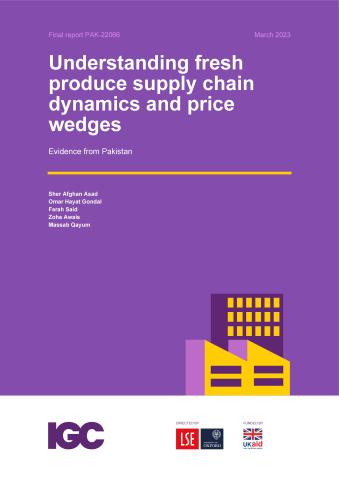-
Asad et al Final report March 2023
PDF document • 11.58 MB
A typical urban agriculture supply chain is dependent on multiple middlemen from the auction yard to the final consumer. The presence of numerous intermediaries adds to the farmgate price and inflates the consumer's overall price. This report aims to document and collect granular level data about transactions from the wholesale auctioneer to the last stage middlemen (retailers) before the product reaches consumers for three staple vegetables: onions, potatoes, and tomatoes.
Empirical results indicate that, after controlling for product quality, bulk-breakers retain margins in the range of 20 to 42%, the highest margin for tomatoes. Conversely, retailers retain 14 to 28%, the highest in the case of potatoes. Potential causes for differences in the margins over products could be attributed to types of costs incurred by the entities, vegetables, wastage, and the size of wastage for each vegetable. These findings highlight the need for price-stabilisation policies to consider the role of the bulk-breakers in conjunction with that of retailers. Possible avenues for future research can also explore channels to reduce product wastage in the markets, reduce costs, and improve the functioning of the markets.




